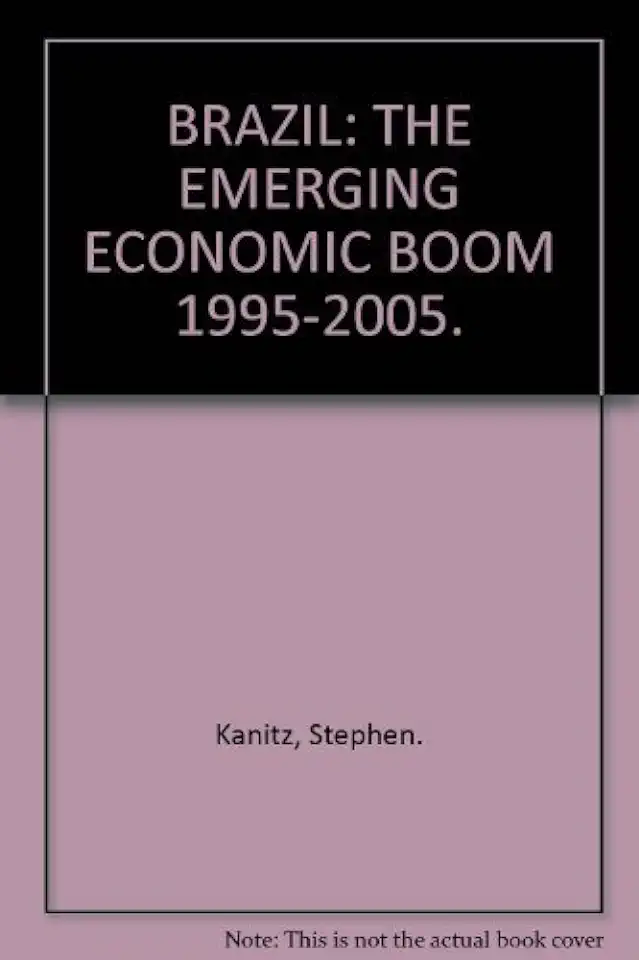
Brazil: The Emerging Economic Boom 1995-2005 - Stephen Kanitz
Brazil: The Emerging Economic Boom 1995-2005
Introduction
Brazil, the largest country in South America, has experienced a remarkable economic transformation over the past two decades. From a struggling economy plagued by hyperinflation and political instability in the 1980s, Brazil has emerged as a global economic powerhouse, boasting a vibrant and diversified economy. This book, "Brazil: The Emerging Economic Boom 1995-2005" by Stephen Kanitz, provides a comprehensive and insightful analysis of Brazil's economic resurgence, shedding light on the key factors that have driven its success and the challenges that lie ahead.
Key Factors Behind Brazil's Economic Boom
1. Macroeconomic Stability
One of the most significant factors behind Brazil's economic boom is the achievement of macroeconomic stability. The implementation of sound fiscal and monetary policies, coupled with prudent management of public finances, has resulted in a significant reduction in inflation and a stable exchange rate. This stable economic environment has fostered investor confidence and encouraged both domestic and foreign investment.
2. Structural Reforms
Brazil has undertaken a series of bold structural reforms, transforming its economy and making it more competitive in the global marketplace. These reforms include privatization of state-owned enterprises, deregulation of key industries, and labor market reforms. These measures have enhanced efficiency, productivity, and overall economic growth.
3. Natural Resource Wealth
Brazil is endowed with abundant natural resources, including vast reserves of oil, gas, minerals, and agricultural land. The exploitation of these resources has played a crucial role in fueling economic growth and generating substantial export revenues.
4. Expanding Domestic Market
Brazil's large and growing domestic market has been a major driver of economic expansion. With a population of over 200 million people, Brazil offers a significant consumer base for both domestic and international businesses. Rising disposable incomes and increasing urbanization have further boosted domestic demand.
5. Global Economic Conditions
Brazil has also benefited from favorable global economic conditions, particularly the sustained growth of the global economy and the rising demand for commodities. This has provided a conducive environment for Brazil's export-oriented economy.
Challenges and Opportunities
Despite its remarkable economic progress, Brazil still faces several challenges that could potentially hinder its continued growth. These include:
1. Income Inequality
Brazil is characterized by a high level of income inequality, with a significant portion of the population living in poverty. Addressing this issue is crucial for ensuring sustainable and inclusive economic growth.
2. Infrastructure Deficiencies
Brazil's infrastructure, particularly in the areas of transportation, energy, and sanitation, requires significant investment to support continued economic growth and improve the quality of life for its citizens.
3. Political Instability
Brazil's political landscape is often characterized by instability, with frequent changes in government and policy uncertainty. This can create challenges for long-term economic planning and investment.
4. External Shocks
Brazil's economy is vulnerable to external shocks, such as fluctuations in global commodity prices and changes in global economic conditions. Managing these risks is essential for maintaining economic stability.
Conclusion
"Brazil: The Emerging Economic Boom 1995-2005" by Stephen Kanitz offers a compelling account of Brazil's remarkable economic transformation. By analyzing the key factors behind its success and the challenges that lie ahead, this book provides valuable insights for policymakers, investors, and anyone interested in understanding the rise of Brazil as a global economic powerhouse.
Enjoyed the summary? Discover all the details and take your reading to the next level — [click here to view the book on Amazon!]